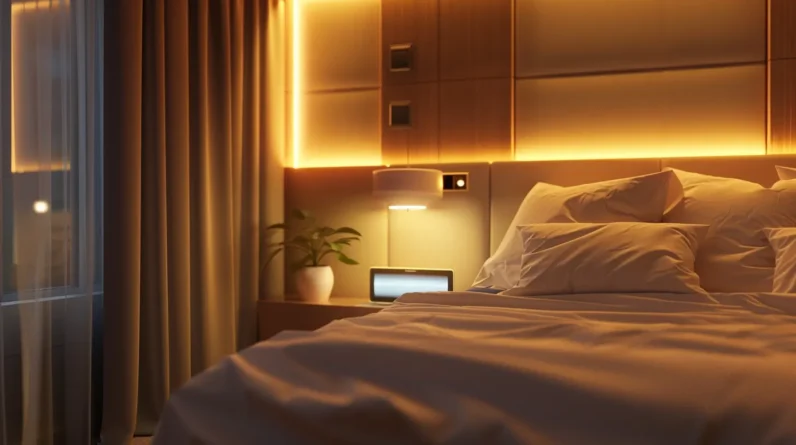
We’re creating a smart home theater that combines the best of smart TVs and speaker systems. First, we choose a smart TV that fits our room layout, with a 4K or OLED resolution and a user-friendly interface. Then, we select a speaker system that matches our budget and audio needs, ensuring compatibility with our TV. We set up our TV by connecting it to our router and configuring picture and sound settings. Next, we connect our speaker system using an optical audio cable or Bluetooth. Now that we’ve got the basics covered, we can start fine-tuning our setup for an unparalleled viewing experience – and we’re just getting started.
Choosing the Right Smart TV
When selecting a smart TV, we consider several key factors, including screen size, resolution, and operating system, to make sure we get a device that meets our entertainment and connectivity needs. We opt for a screen size that fits our viewing distance and room layout, ensuring an immersive experience. Resolution is essential, so we choose a 4K or OLED TV for crystal-clear images. The operating system is also crucial, as it determines the TV’s compatibility with our favorite streaming services and apps.
We look for a TV with a user-friendly interface and voice control capabilities for seamless navigation. By weighing these factors, we can find a smart TV that exceeds our expectations and provides endless entertainment options.
Selecting the Perfect Speaker System
How do we make sure that our smart TV’s impressive visuals are matched by equally impressive audio, and what factors do we need to take into account when selecting the perfect speaker system to complete our home entertainment setup? We start by considering the room’s acoustics, taking note of its dimensions, furniture, and any potential sound-absorbing materials. Next, we determine our budget and assess our audio needs – do we want a simple stereo setup or a full-fledged surround sound system?
We also need to think about compatibility, ensuring our speaker system integrates seamlessly with our smart TV and other devices. By weighing these factors, we can select a speaker system that delivers rich, immersive sound, elevating our overall viewing experience.
Setting Up Your Smart TV
With our speaker system in place, we’re ready to turn our attention to setting up our smart TV, connecting it to our network and configuring its settings to access its full range of features. We start by connecting the TV to our router using an Ethernet cable or Wi-Fi, depending on our network setup. Next, we navigate to the TV’s settings menu and select the network option, following the on-screen instructions to complete the connection.
Once connected, we can access various streaming services, such as Netflix and Hulu, by downloading and installing their respective apps. We can also configure the TV’s picture and sound settings to optimize our viewing experience. By following these steps, we can unleash our smart TV’s full potential and enjoy a seamless entertainment experience.
Connecting Your Speaker System
We connect our speaker system to the TV using an optical audio cable or Bluetooth, depending on the type of connection supported by our devices. Next, we configure the TV’s audio output settings to match the connection type. For optical audio, we set the TV to output PCM (uncompressed) or Bitstream (compressed) audio. If using Bluetooth, we verify the TV and speakers are paired correctly. We also adjust the speaker system’s settings to optimize audio quality.
This may involve selecting the correct input, setting the audio mode, and adjusting the EQ settings. Finally, we test the connection to make sure seamless audio playback from our TV to our speaker system.
Optimizing Your Home Theater Experience
Now that our speaker system is connected and configured, let’s fine-tune our home theater setup to create an immersive audio-visual experience. We’ll adjust the speaker settings to optimize sound quality and calibrate the TV’s picture settings for a cinematic feel. We’ll also experiment with different audio formats, like Dolby Atmos or DTS:X, to find the one that best suits our content. Besides, we’ll set up our smart TV’s built-in calibration tools to confirm accurate color representation and contrast.
By making these adjustments, we’ll be able to fully immerse ourselves in our favorite movies and TV shows. With our home theater optimized, we’ll be ready to enjoy an unparalleled viewing experience.
Conclusion
As we wrap up our smart home theater setup, we’re reminded of the old adage “the whole is greater than the sum of its parts.” And it’s true – our carefully selected smart TV and speaker system come together to create an immersive experience that’s nothing short of breathtaking. But what really drives it home is the seamless integration, the perfect harmony of technology and design. It’s not just a setup, it’s an emotional escape, and we’re thrilled to have you along for the ride.







